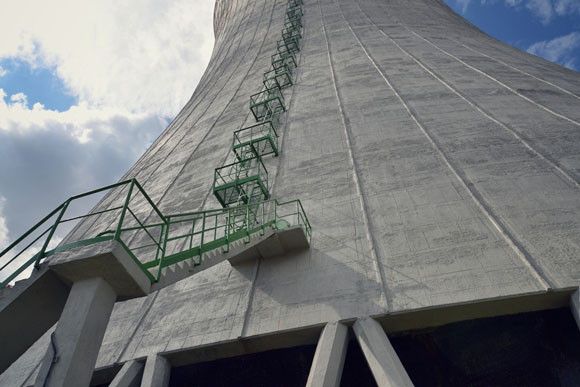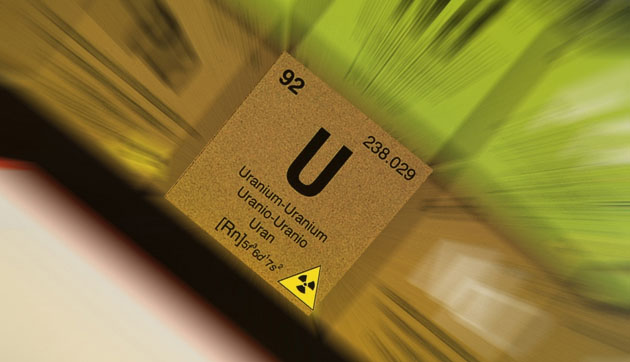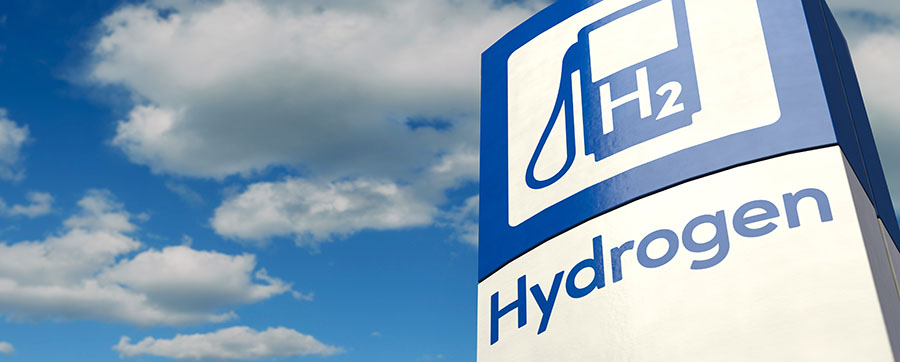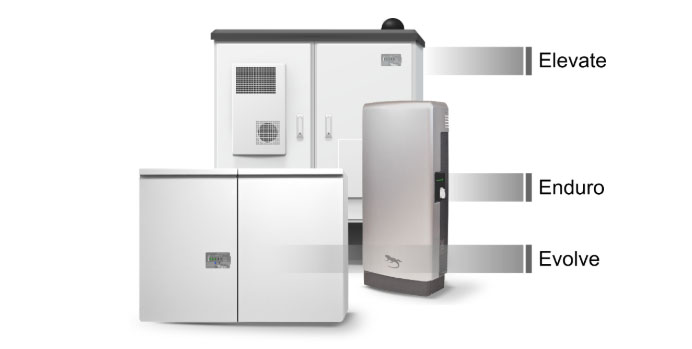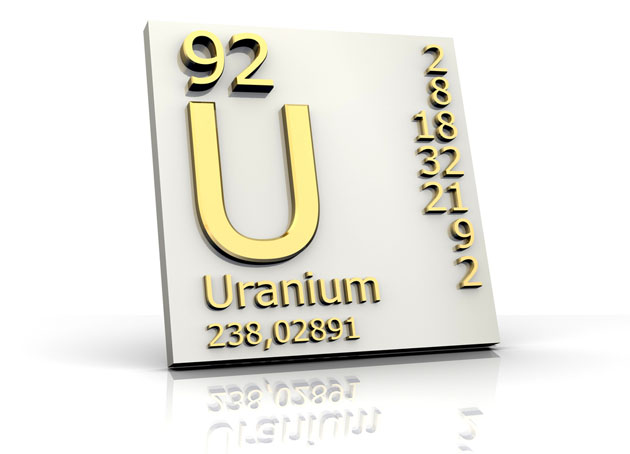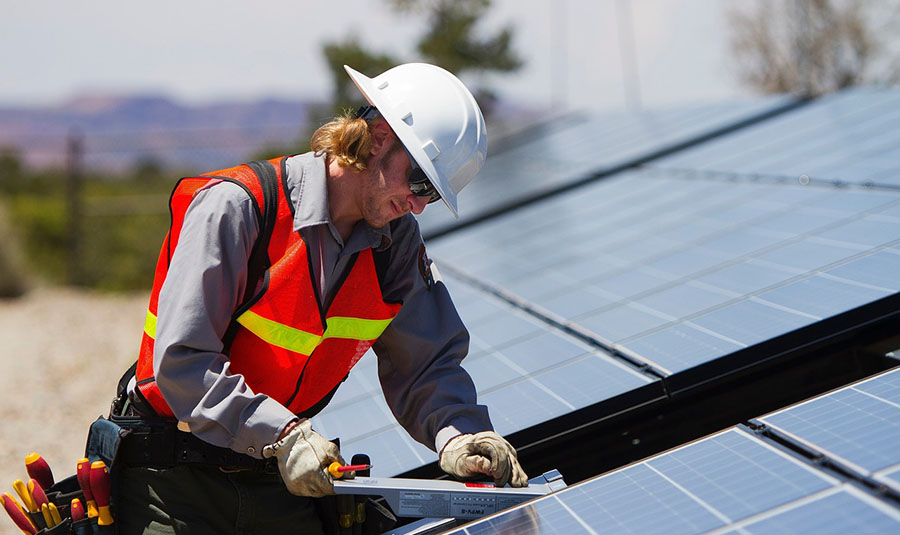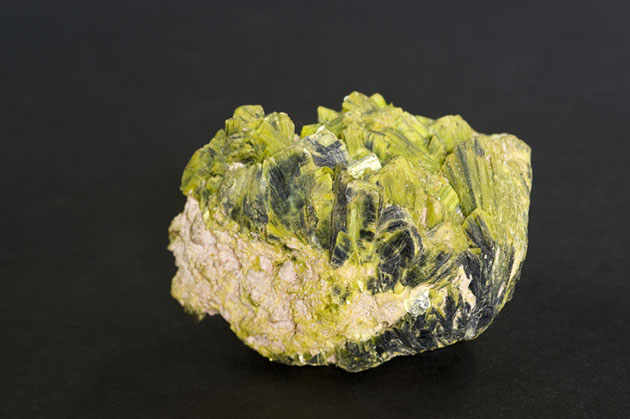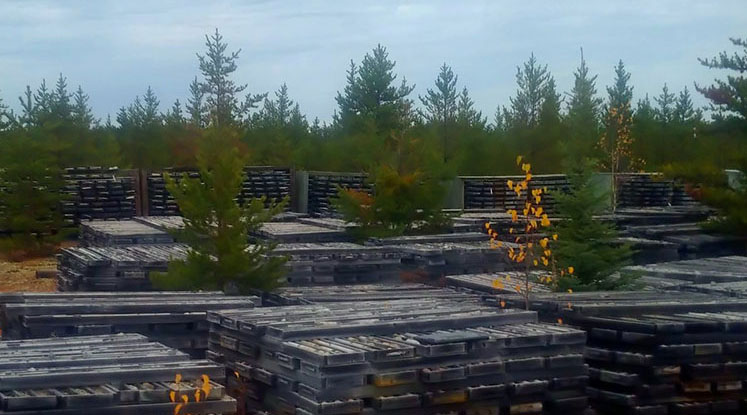TICKERS: AOI, TSX.V, CMMC; CPPMF, DANA, DML; DNN, , , MXY, MDPWM, ORA, PXP, PCC, RPG, REO, , SPC, TLW, URG; URE, UEC
Marin Katusa Values Viable Technologies and Leadership
Interview
Source: Karen Roche of The Energy Report (11/4/10)
 Casey Energy Opportunities Senior Editor Marin Katusa shares his perspectives and predictions on the direction in which the energy sector is headed—from popular green alternatives like geothermal, run-of-river hydro and natural gas to the oil sector all the way to the less-popular, but very viable, uranium sector. The Energy Report caught up with Marin at the New Orleans Investment Conference for this exclusive interview.
Casey Energy Opportunities Senior Editor Marin Katusa shares his perspectives and predictions on the direction in which the energy sector is headed—from popular green alternatives like geothermal, run-of-river hydro and natural gas to the oil sector all the way to the less-popular, but very viable, uranium sector. The Energy Report caught up with Marin at the New Orleans Investment Conference for this exclusive interview.
Marin Katusa: Let's start with the geothermal sector. Two years ago, geothermal was the buzz and hot sector in the junior resource sector. Today, nobody's talking about it. That's beautiful and fine by us because now these companies have developed projects and explored at a much lower cost of capital for present investors. But the investors got bored and sold the stocks. Now these companies are 50% cheaper than they were 16–18 months ago, but they have so much more value today than they did 18 months ago.
TER: What's unique about the geothermal?
MK: Of all the green energies, geothermal is by far the most economic. It makes sense. It works without government subsidies. But, when you include the government subsidies, it's like taking candy from a baby (or from Obama, not sure which is easier). The government's providing the construction loan guarantees and refinancing the projects at around 4% debt versus a year ago when companies were doing it at +14%. That's a big difference on the bottom line for cash flow. You can cheaply buy geothermal companies that actually have positive cash flow. I think it's the cheapest sector today—period.
TER: One of the downsides of geothermal is it's a relatively small sector. There aren't a lot of players in it. What will really take it to the next level?
MK: That's actually the upside. Because there are so few players and it is so front-CAPEX extensive, consolidation will have to happen to create the size. The key number to get the attention of a big firm, such as MidAmerican Energy Holdings Co. (NASDAQ:MDPWM; OTCBB:MDPWM), which is Warren Buffet's energy company, is 500 megawatts (MW) of production. Whether it's Ram Power Corp. (TSX:RPG) taking over Nevada Geothermal Power (TSX.V:NGP), Nevada Geothermal taking over Ram, Nevada taking over Magma Energy Corp. (TSX:MXY), Magma taking over Nevada or a merger between Ram and Magma—there's going to be consolidation. But the question of who will be the consolidator is still up in the air.
You want to be in the company that's going to have the largest upside. We put Nevada Geothermal, Ram and Magma as buys because they're run by excellent people. They're undervalued compared to a year ago. In January, Nevada Geothermal was over $1. We recently wrote about it trading in the $0.50 range. Now the company's refinanced its debt and had a recent equity financing in which very smart money like Rick Rule participated in (as did we). It's producing close to 50 MW now and will be growing production in the very near future; and, better yet, Ormat Technologies Inc. (NYSE:ORA) just bucked up some big money to farm into one of its other projects. A year and a half ago, it wasn't producing; so it's so much cheaper today and is a much better company.
TER: We've seen some consolidation. Over a year ago, you had Ram and Magma. . .
MK: Ram was created when Polaris Geothermal and Sierra Geothermal Power Corp. merged with Hezy Ram's private company. Magma is purchasing a lot of the Iceland production and it purchased Soda Lake in Nevada. Consolidation is going to continue.
TER: Why haven't these consolidator plays seen any market appreciation since the IPOs?
MK: Well, frankly, a lot of upside was already priced into the IPO of those two. We stated very clearly to be patient and wait until the "mojo" and "excitement" of the IPO weakened and both companies hit our buy targets, which they are currently at; both are great buys today. There's a lot of sex appeal to these companies.
Geothermal is a very difficult business—you have to produce results. It's not like gold where you can do some geophysics, some trenching, pop a couple of holes and say, "I think I've got 5 million ounces of gold here," then wave your hands and have a +$100 million market-cap company. In geothermal, when you pop in that hole it's going to cost you US$4–$6 million per well and you know what you have.
Ross Beaty and Ram raised hundreds of millions of dollars and they had all these huge projects with a lot of potential. There was a lot of hype built into the price and a lot of expectations. I told people just to be patient and not buy the stocks. That was a very frustrating period for me because we had subscribers asking, "Why can't we buy it now?" It's a funny thing, we got a lot of grief for telling subscribers to "BUY under $X" but it was EXACTLY the right thing to do. So, the price and timing of your purchase are just as important as selecting the right company in which to invest.
I was on a panel with Ross Beaty at a Casey Conference in September 2009 when the stock was about $2.25. Somebody on the panel asked what I thought. My answer was: "Be patient. Buy under $1.50." Within six months, it got to $1.35. That's because the big institutions had unrealistic expectations, got bored and, more importantly, didn't understand the geothermal sector. A lot of mining investors invested in the geothermal sector, but their timeframe was much shorter than that needed for the geothermal sector. Geothermal today is the uranium sector in 2004. Today, gold is hot and the investors took their money and placed it elsewhere. Geothermal is getting no love. Like I said before, we look for undervalued "unloved companies and sectors." And a patient investor will make a lot of money in a few years by investing today in the geothermal sector.
TER: What are the good buys in geothermal?
MK: Right now, we have three buy recommendations: Nevada Geothermal, Ram Power and Magma.
TER: The big 800-pound gorilla in the geothermal sector is Ormat. Does it fall into the buy category?
MK: No. It has some issues with the regulators right now. It's a big company that has undergone a management change. I believe you have much more upside owning Magma than you do owning Ormat. But I do believe you will see Ormat involved in the consolidation of, or investment in, other companies' projects like the one it just announced with Nevada Geothermal, which by the way, is a fantastic deal for Nevada Geothermal shareholders.
TER: Magma and Ram are already consolidation plays, but Nevada Geothermal is not. Does that make Nevada a better opportunity?
MK: If you compare Ram and Nevada, the big difference is that no one expects Ram to be bought out today. Ram doesn't have enough production. The beauty of Nevada Geothermal is that not only is it going to be growing these projects, but also President and CEO Brian Fairbank and his team are very good and very well respected on the technical front. They built the plant and will increase production on Faulkner. The Blue Mountain Faulkner 1 is the largest plant built in Nevada in more than 20 years and it's one of the largest plants built in the U.S. over the last 10 years. He will not only increase the production of project, but he has three phases coming.
A lot of people are wondering if Magma, Ormat or Ram will buy the company out. So not only is there near-term growth within the company, but you also have the speculation: "Will it get bought out?" That gives you a double-impact speculation. The "hot" money hasn't even figured out this play yet, but it will. With Ram, it is just growth. That's the difference between the two.
TER: You also said that oil is ripe for a correction. Can you explain why you think that?
MK: There's a lot of speculation in the oil markets. In the summer, we published a research report in the Casey Energy Report, which showed that when the BP spill happened, it took 15% of America's supply offline. You would have assumed the spot price of oil would've corrected upward. What actually happened when all offshore drilling was shut down in the Gulf was the spot price of oil dropped 20%. What does that tell you? The speculators didn't know what to do, so they just got out. They took the money off the table. There's a speculation premium in the oil markets right now. However, on the other side, you need to look at how low oil can go. It's a reflection of the economy and speculation. China will buy up all the oil it can get at US$40/barrel.
TER: Isn't it more a reflection of supply because you're hearing all about peak oil?
MK: Yes, there's the peak oil concept. Look at natural gas. America's been so successful in unconventional shale gas technology, but that's just starting to hit Europe. The Middle East hasn't even started doing unconventional exploration. You've got these great, cheap world-class producers that have been producing the same way they did before I was born over 30 years ago that haven't seen modern American technology. When the American innovation hits the Middle East, you will see a lot more of this supply come online.
TER: To what technology are you referring?
MK: The unconventional shale primarily uses fracking techniques. The hottest thing in Europe right now is the unconventional shale sector. Big funds like the one run by George Soros are investing millions of dollars in the sector—these wells cost more than US$8–$15 million per well. But people are worried because each frack uses 2–5 million gallons of water.
In the old days, when you drilled a well for gas, once you spud—you produce. There's no way to contain it; you have to sell it. So, you dump it into your pipelines and get the price going at the wellhead. Today with the shale technology, you can frack it and it takes you about two days to complete the well. That way, you know how much gas you have and it's a new natural storage facility. You don't have to pump it out. The reservoirs can triple—quadruple if they're successful.
TER: What's the timeframe for getting this unconventional technology into Europe and the Middle East?
MK: It's already starting in Europe. In fact, Casey Research wrote the first research report in the business on the potential of shale gas in Europe. In the Middle East, I think the best potential right now is a company called East West Petroleum Corp. (TSX.V:EW). It has the people, network, connections, experience and knowledge. I haven't been as excited about a company as I am about East West since Cuadrilla Resources Ltd. (which was the leader in European shale and got bought out) and Copper Mountain Mining Corp. (TSX:CUM) before that.
TER: East West's property is mostly in the Middle East?
MK: Nope, it has a project in Alberta that is producing. It also has four blocks in Romania in the Pannonian Basin—a very hot area right now. I'm hoping the company gets in early and uses other people's money (OPM) with the Romanian projects. I've met with the management and it intends to joint venture (JV) that out and get someone else to spend more than US$60 million on the project. After that, East West will take a free ride over the next four years.
When we do our due diligence, we always focus on people. If you look at the management team, President and CEO Dr. Greg Renwick spent more than 10 years in the Middle East. That's where he was an integral part of Centurion, which Dana Gas (ADX:DANA) bought out. I believe that you go where you know what to do and are effective at what you do best. Our big speculation here is that Greg is going to do something big in the Middle East. With people like Herb Dhaliwal and Dr. Marc Bustin on the board, he's built an amazing team. Dr. Bustin is one of the best minds in the business and probably one of the world's top experts in the unconventional oil and gas sector. Dr. Bustin was the one who educated me on the potential of the European shale gas sector, and investors can make a lot of money following him. Remember, the best companies are always built by great people.
TER: When we spoke at the Casey Conference in San Diego, you recommended Africa Oil Corp. (TSX.V:AOI) as one of your top picks at under CAD$1. The company was trading in the low $0.80s when you recommended it. You put out a Casey Energy Confidential alert on Africa Oil at CAD$1.05 and told the audience the company was a perfect example of taking the Casey Free Ride. It's gone up so much in such a short period, but you're still recommending it. Also, could you explain the Casey Free Ride concept again for our readers who might not be familiar with it.
MK: Sure. Casey's Free Ride is when returns make you feel you want to take a profit, always take your initial investment out or more if you want. What remains invested is like playing with the house's money in a casino. At that point, you can't lose.
And as far as Africa Oil, I went on national TV, in the newspaper and our newsletter saying, "Buy under $1." It was trading in the $0.80 range and today it hit over $2. In four months, our subscribers had a gain of more than 100%. The people at Africa Oil are amazing and have a pattern of success; perhaps they have different DNA, but it's in their blood (success, that is). Both Lukas Lundin and Keith Hill are part of our Explorers League. They've had success after success; they know what they're doing.
Then you've got Tullow Oil plc (LSE:TLW), which is the largest African oil explorer to come in and farm into its projects. That's what East West is going to do. You come in early and see what no one else sees. You develop these projects to the point where a major can come in and spend hundreds of millions of dollars on them, and you've just conserved your share worth. You haven't diluted your shareholder. It increases shareholder net worth by doing OPM or the JV model. That is what Africa Oil is doing so successfully, and it's going higher.
Another example is Stream Oil and Gas (TSX.V:SKO). In one of our publications, we recently told subscribers to take profits on that and we're at a 500% gain. We did the same thing with Amir Adnani, the CEO of Uranium Energy Corp (NYSE.A:UEC). Our subscribers' gains were over 1,000% on that specific investment. You have to take some profits off the table. But the story got so good that we just put it as a buy again. Amir Adnani is a name people should definitely watch; it's in our "Top 10 Under 40 list," which can be read for free at www.caseyresearch.com.
TER: Is Africa Oil to the point where institutions are coming in yet?
MK: It's starting to get the institutions in. The company is now attracting the attention of the biggest and smartest institutions in the world of oil exploration.
TER: You also wrote about uranium making a comeback. There are several uranium companies in the booths at this conference. Please tell us about what you're seeing.
MK: The most recent recommendation in our newsletter was Denison Mines Corp. (TSX:DML; NYSE.A:DNN). We said buy under $1.30. The company popped over $2.30. Most recently, we said to take a Casey Free Ride. We've had big success with Hathor Exploration Ltd. (TSX.V:HAT). And Uranium Energy has been a free ride.
Some of the best management teams in uranium are Ted Trueman with Pitchstone Exploration Ltd. (TSX.V:PXP) and Rick Kusmirski with JNR Resources Inc. (TSX.V:JNN). These guys have spent their lives in uranium. But they are not good promoters—they're good explorers. They will make a discovery; it's just taking time, but that's the exploration game.
Uranium is still not loved. It's unpopular but we've had big success with Hathor, which is a free ride. But if I were to buy a uranium company today, it would be the small micro caps like JNR and Pitchstone.
TER: What do you see for JNR, which is still looking for uranium, compared to Hathor and Denison, which are producing?
MK: Hathor's not producing. Denison has facilities in the Athabasca and in Utah. I see the next near-term producer being Amir Adnani's Uranium Energy Corp. It's going to start out producing about 1 million pounds (Mlb.) uranium a year. Within three or four years, it'll get to 3 Mlb.
Unfortunately, JNR and Pitchstone have uranium but not in large economic numbers. Until they get to the magnitude of Hathor, which found a great discovery, JNR and Pitchstone won't get that type of promotion or value in their stock. Right now, Pitchstone is trading 2x–3x cash in the $0.36 range.
TER: Another company is Ur-Energy Inc. (NYSE:URG; TSX:URE). When I spoke with the company, I learned that, in the U.S., we've burned something like 55 million tons (Mt.) of uranium. We produce only about 12.5 Mt., so a lot of that uranium is being imported.
MK: The year 2013 will be a very important year in the energy world. That is when the HEU Agreement for uranium will be renegotiated. It is also when the government will take another look at the American Recovery and Reinvestment Act for the green energy companies.
The HEU Agreement involves the Russians taking their nuclear warheads, blending them down and converting them into fuel. People forget that the U.S. has 3x the number of warheads as Russia. Will America down blend its own warheads? I don't know. America doesn't have the actual physical, logistical infrastructure to do it within the country. Russia has that infrastructure. America would have to send its warheads to Russia to get uranium back. What a funny result of the Cold War. But in all seriousness, I think you're going to see uranium going sideways. If you're a long-term investor, start picking up these companies on the cheap because they are cheap right now.
TER: If the U.S. decides to downgrade its nuclear weapons, wouldn't that drop the bottom out of the uranium price?
MK: It would; but, as I said, the infrastructure is not in place to do so. I'm pretty sure that every American is going to stand up and say, "No, we're not sending our weapons to Russia to get down blended."
TER: If we're importing most of our uranium, is there any distinct investment advantage to investing in U.S. uranium?
MK: Yes, there is. Look at Uranium Energy Corp. When we first recommended the company, it was $0.25. It's at $4.45 now. That's a nice win. Why? Because Uranium Energy Corp. is going to be America's next in-situ recovery (ISR), low-cost producer.
America's problem is that most of the prior production was conventional hard rock. That costs about US$40–$45 to produce. ISR is unconventional; it's an unconventional technique. You can do it for under US$30/lb. There's upside there. You will see a lot more of the word "unconventional," which means it's not the standard or "old" way of doing things. Rather, it uses new, more-proven modern techniques and, eventually, the newer unconventional techniques will replace the older ones.
You look at Denison's White Mesa Mill, and the company can't really make money at $40/lb. uranium. That's its cost. What's saving Denison is the vanadium byproduct—it's getting quite the upside there. So you're completely right. You want to invest because companies like Denison and UEC are going to be the cornerstone of American production. But, at US$50/lb., Denison starts making some real money—especially with its vanadium as a sweet kicker.
TER: A theme throughout our discussion is unconventional technology. You mentioned Reservoir Capital Corp. (TSX.V:REO), which has run-of-river hydro, the last time we chatted.
MK: That's not really unconventional; run-of-river hydro has been around for a long time. It's an old technology—a proven technology. Run-of-river is my second favorite green energy. It's also economic without government subsidies. The difference between run-of-river and geothermal is that geothermal has a larger baseload. However, run-of-river is a lower upfront cost.
We had a very successful run with three run-of-river companies in our newsletter. Plutonic Power Corp. (TSX:PCC) was a more than 100% gain; Swift Power Corp. got bought out at a nice gain and Reservoir also has been a huge success. We've more than doubled our money in Reservoir and recently recommended the company again through our alert service and our newsletter. Reservoir is a run-of-river developer in Serbia with geothermal projects in Bosnia and mining projects in Serbia. The company will likely spin out its mining projects, as well as its geothermal. The big upside for Reservoir Capital will be when it signs its power purchase agreement (PPA). If it can do that within the next six months, you will see a lot of institutional interest in the company.
So what do you invest in? You want to invest in juniors that don't really have the attention of the big institutions because, when institutions come in, it'll be like Africa Oil, Copper Mountain or Cuadrilla. These companies will be 4x, 5x, 6x or 7x the value because the institutions come in and want to do a big financing. If that happens, Reservoir will be well north of $1. I could see it doing the next institutional financing north of $1.50 if it can get a good PPA.
TER: How close is Reservoir to a PPA?
MK: I think you'll see that within the next six months; but, really, I have no idea as these things can take a long time.
TER: What's the probability that it won't happen?
MK: These juniors are all high-risk ventures. What is the risk? Well, I think there's a better chance that it will happen than it won't.
TER: One of the pieces of advice you give investors is to sell and take a Casey Free Ride. But you also say to play only with money you're willing to lose. So, what do you put your money in if it's not in the risk part of your portfolio?
MK: It's difficult for me to compare myself to someone who doesn't live, eat and breathe this business the way I do. Outside of my real estate holdings, I have cash. All the rest is in junior resource stocks. I believe that if you invest in companies that don't yet have the institutional interest but do have great management and people, you will do well. That's the key. You have to invest with people who've done it before and who invest heavily in these companies personally. When you look at the winners like Ross Beaty, Lukas Lundin or Robert Friedland, they are always the largest shareholders in their deals. That's what winners do. It's important to follow that formula.
TER: Very good Marin. Thank you for your time.
Investment Analyst Marin Katusa is the senior editor of Casey's Energy Report, Casey's Energy Opportunities and Casey's Energy Confidential. He left a successful teaching career to pursue what has proven an equally successful—and far more lucrative—career analyzing and investing in junior resource companies. With a stock pick record of 19 winners in a row—a 100% success rate last year—Marin's insightful research has made his subscribers a great deal of money. Using his advanced mathematical skills, he created a diagnostic resource market tool that analyzes and compares hundreds of investment variables. Through his own investments and his work with the Casey team, Marin has established a network of relationships with many of the key players in the junior resource sector in Vancouver. In addition, he is a member of the Vancouver Angel Forum, where he and his colleagues evaluate early seed investment opportunities. Marin also manages a portfolio of international real estate projects.
Want to read more exclusive Energy Report interviews like this? Sign up for our free e-newsletter, and you'll learn when new articles have been published. To see a list of recent interviews with industry analysts and commentators, visit our Expert Insights page.
DISCLOSURE:
1.) Karen Roche of The Energy Report conducted this interview. She personally and/or her family own shares of the following companies mentioned in this interview: None.
2.) The following companies mentioned in the interview are sponsors of The Energy Report or The Gold Report: Ram Power, Nevada Geothermal, Copper Mountain, Uranium Energy Corp and Reservoir Capital.
3.) Marin Katusa: I personally and/or my family own shares of the following companies mentioned in this interview: Copper Mountain, East West Resources, Nevada Geothermal, Reservoir Capital. I personally and/or my family are paid by the following companies: None.


